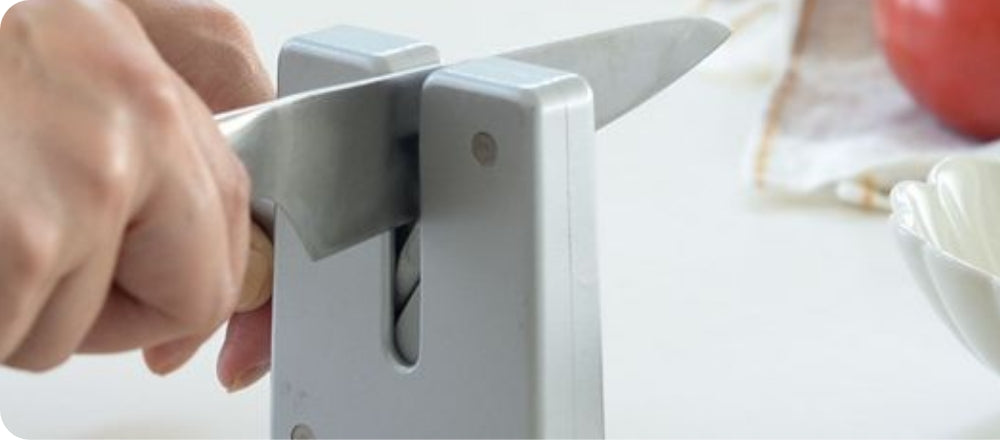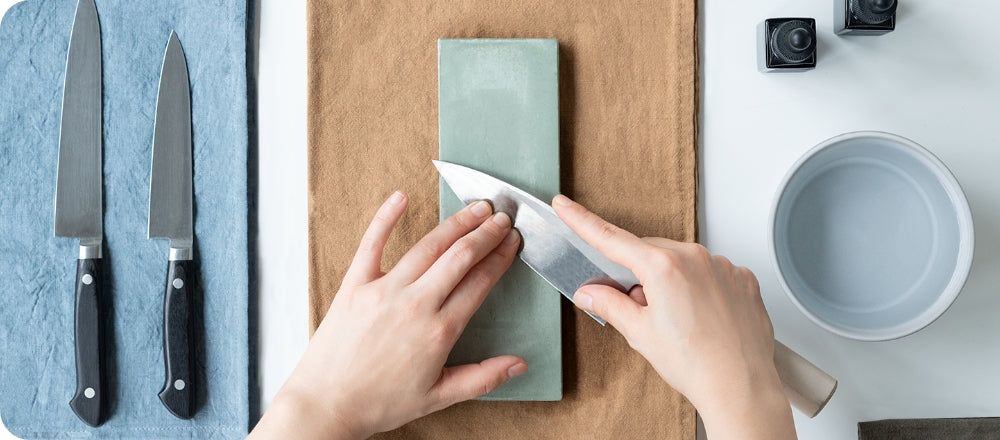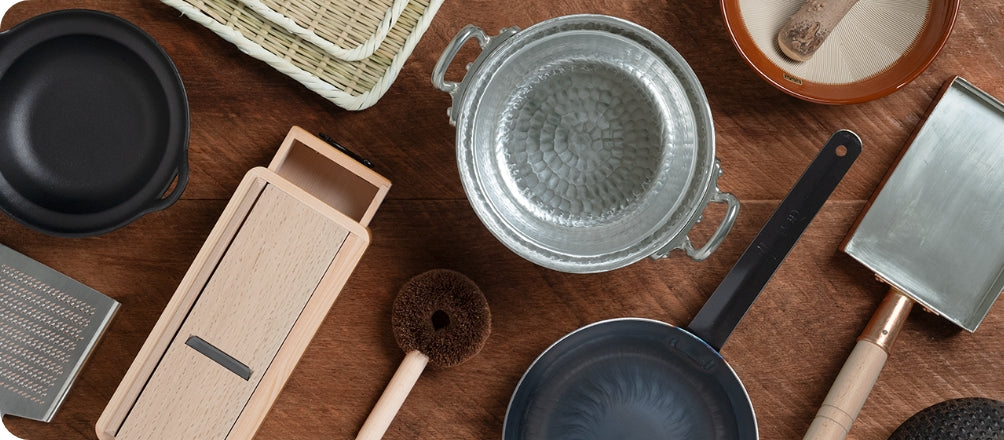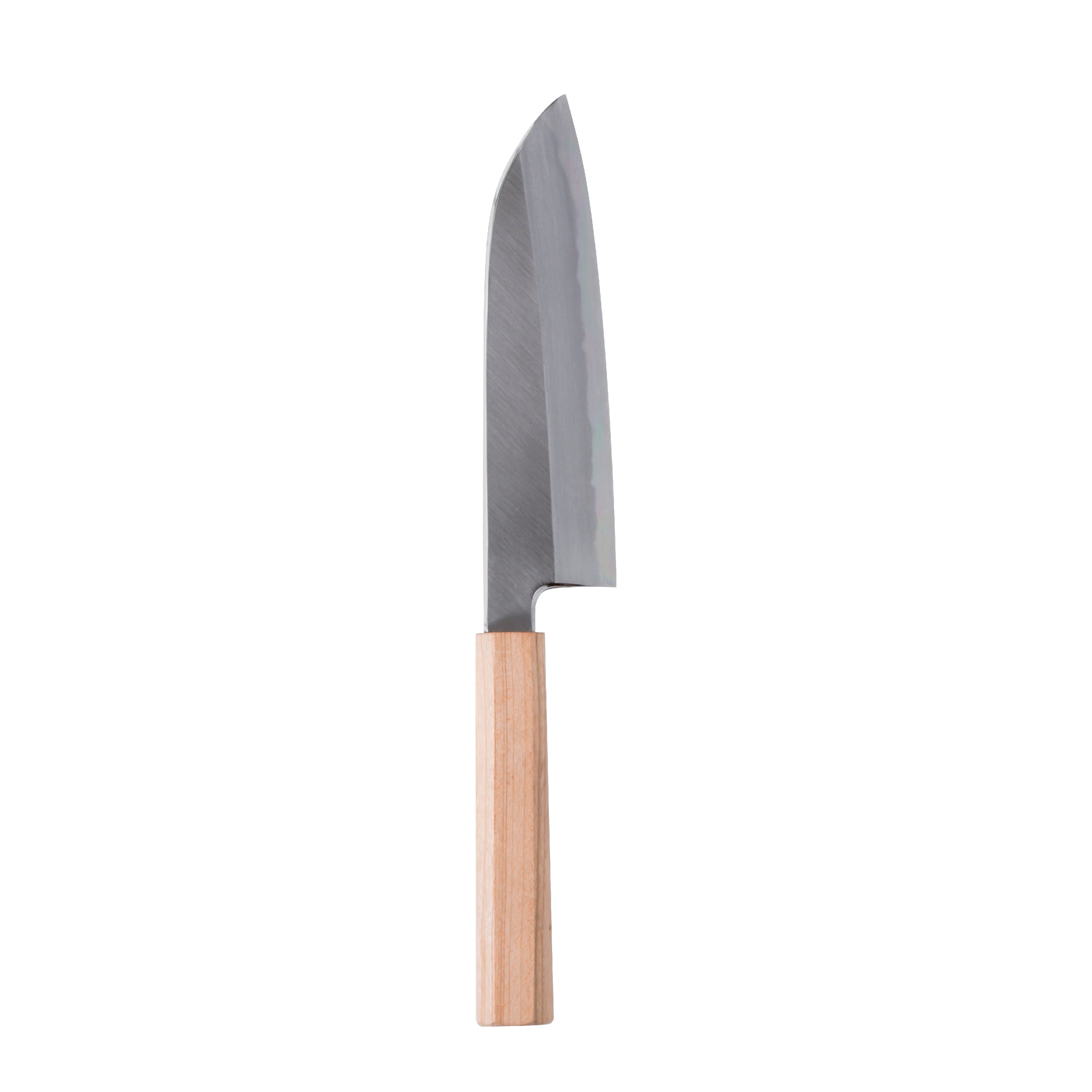
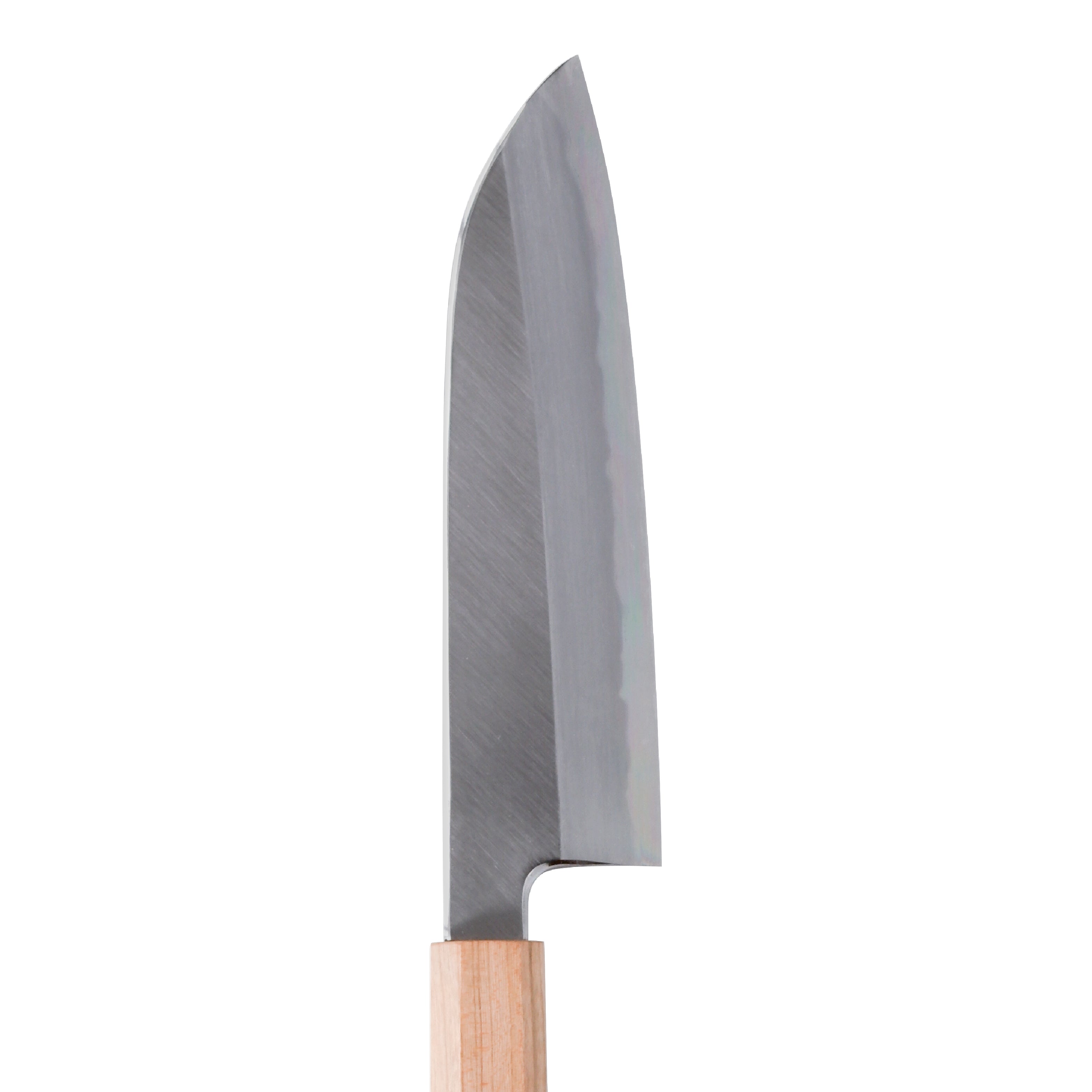
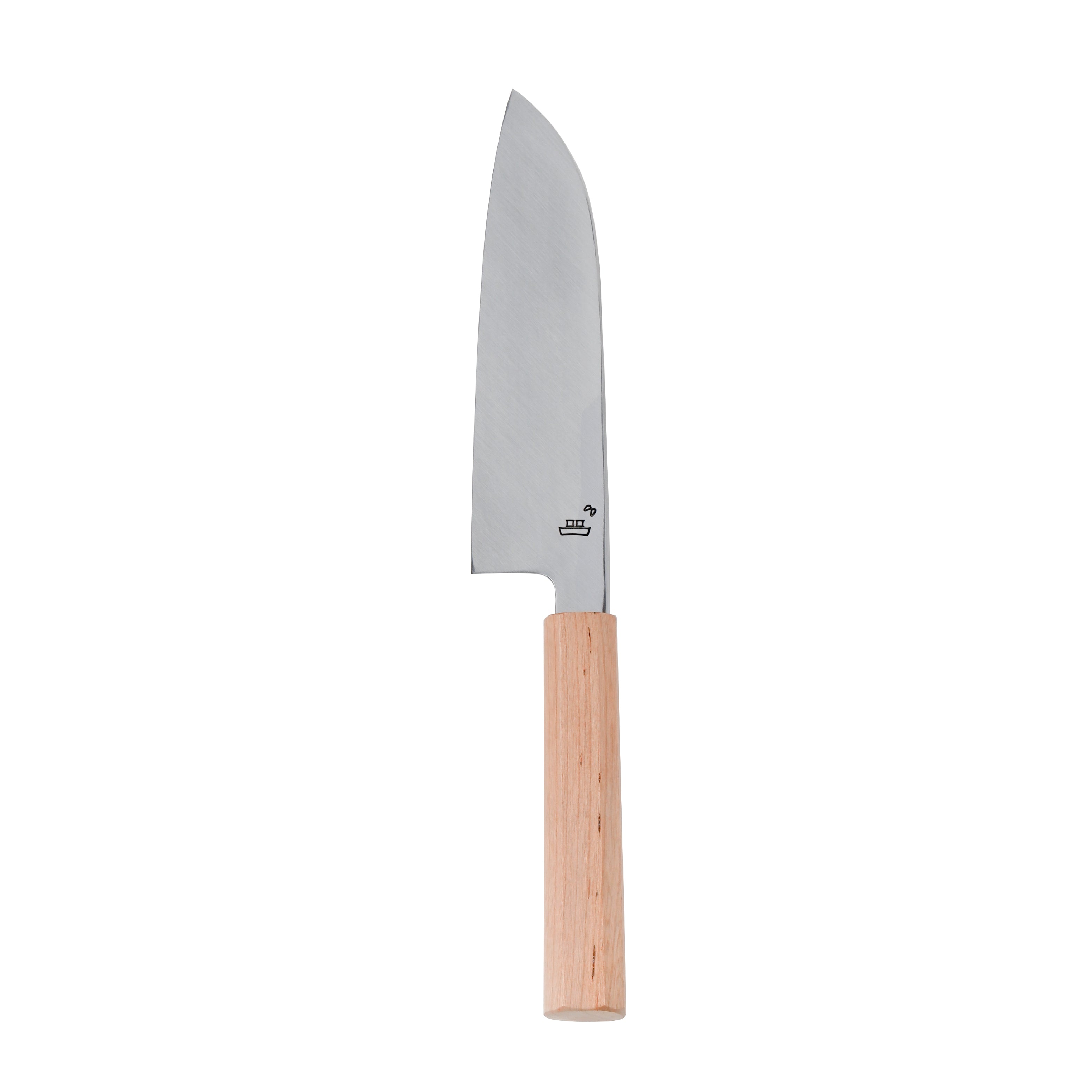
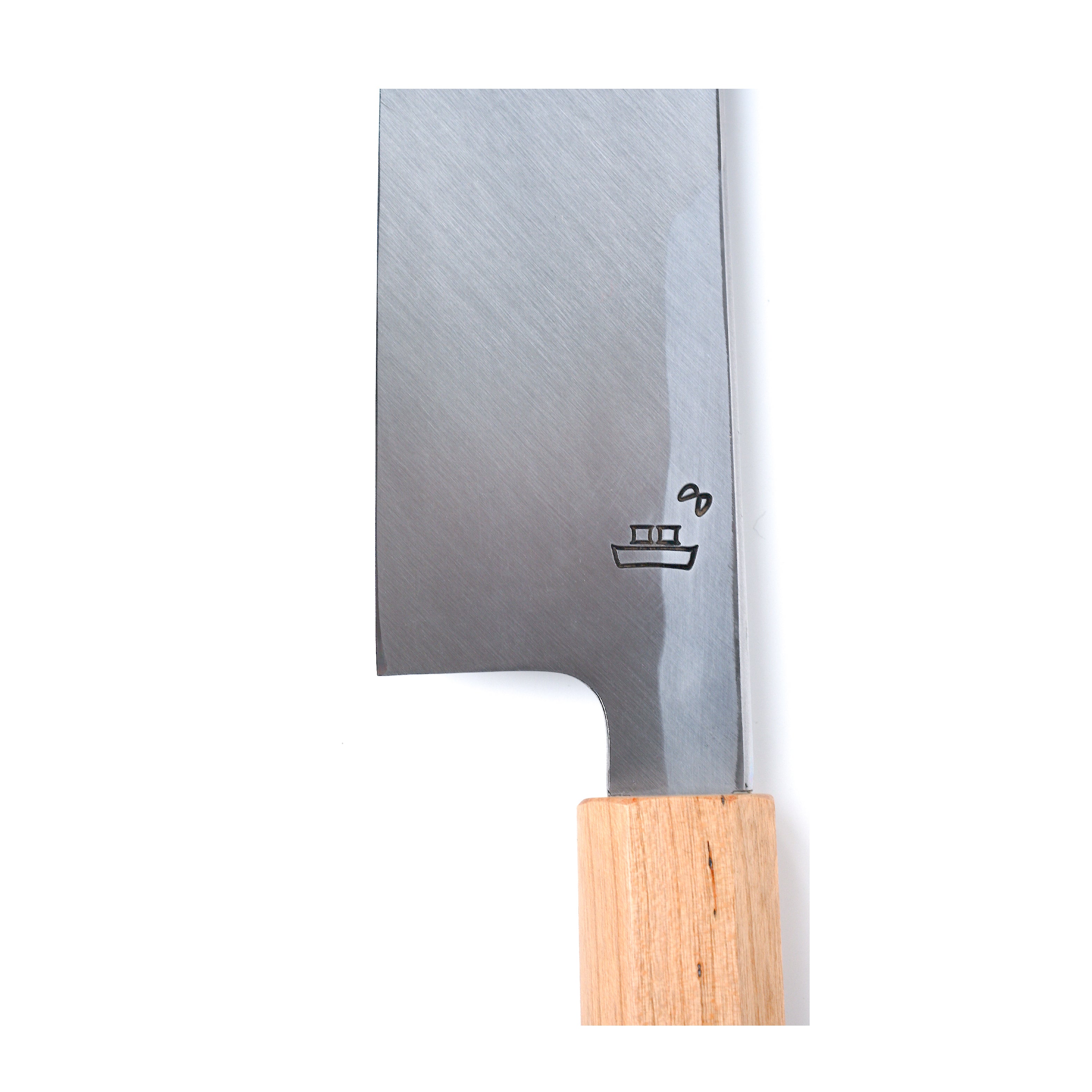
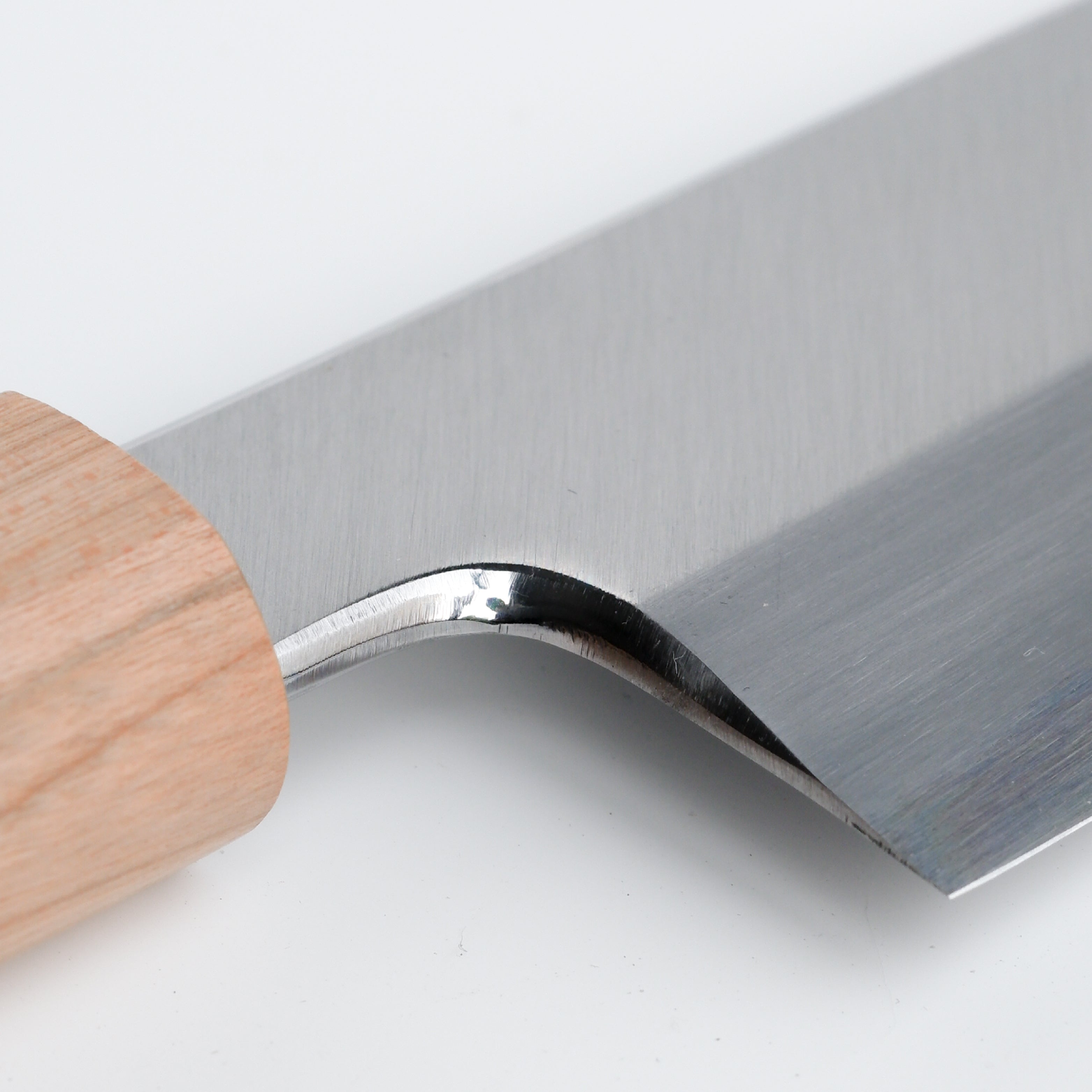
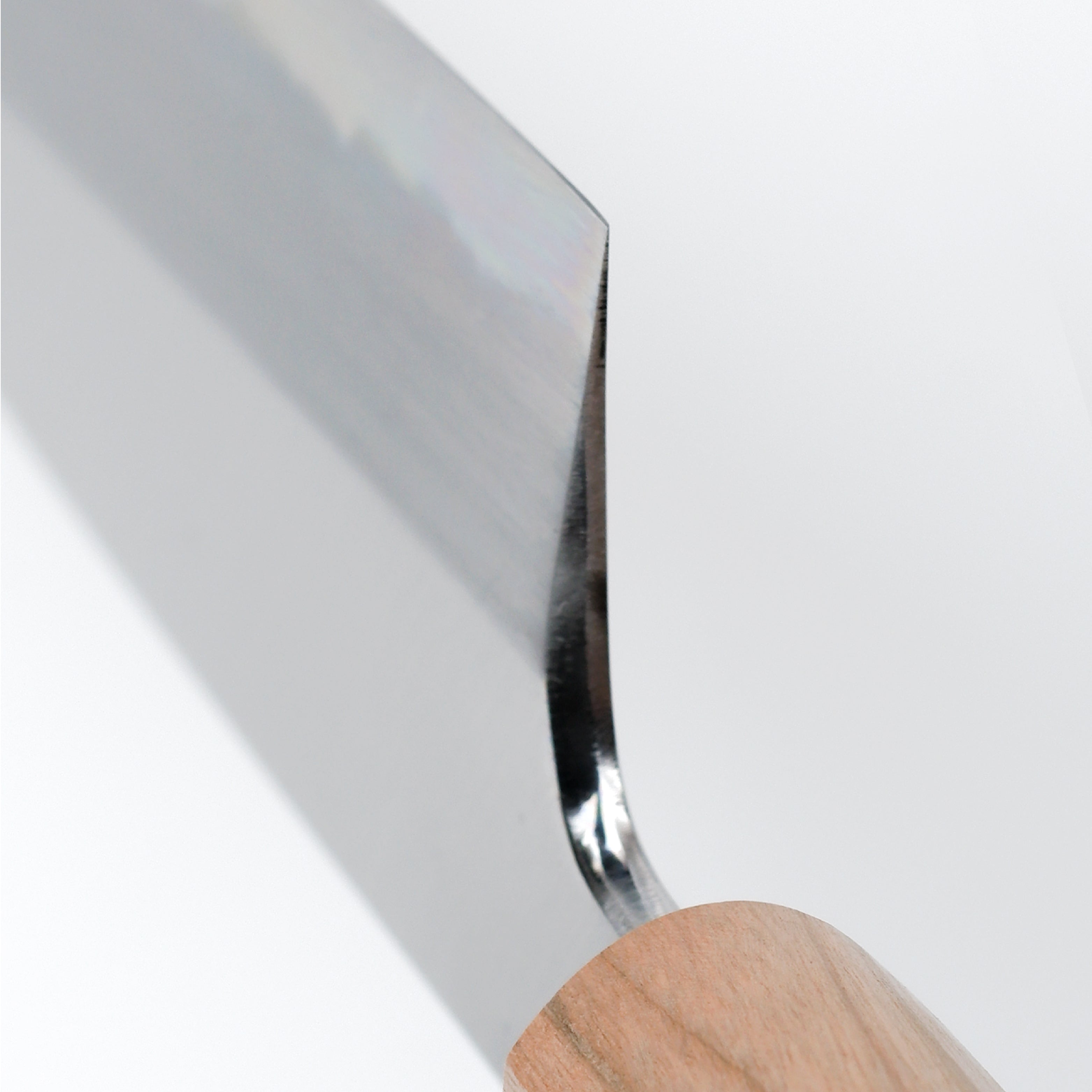
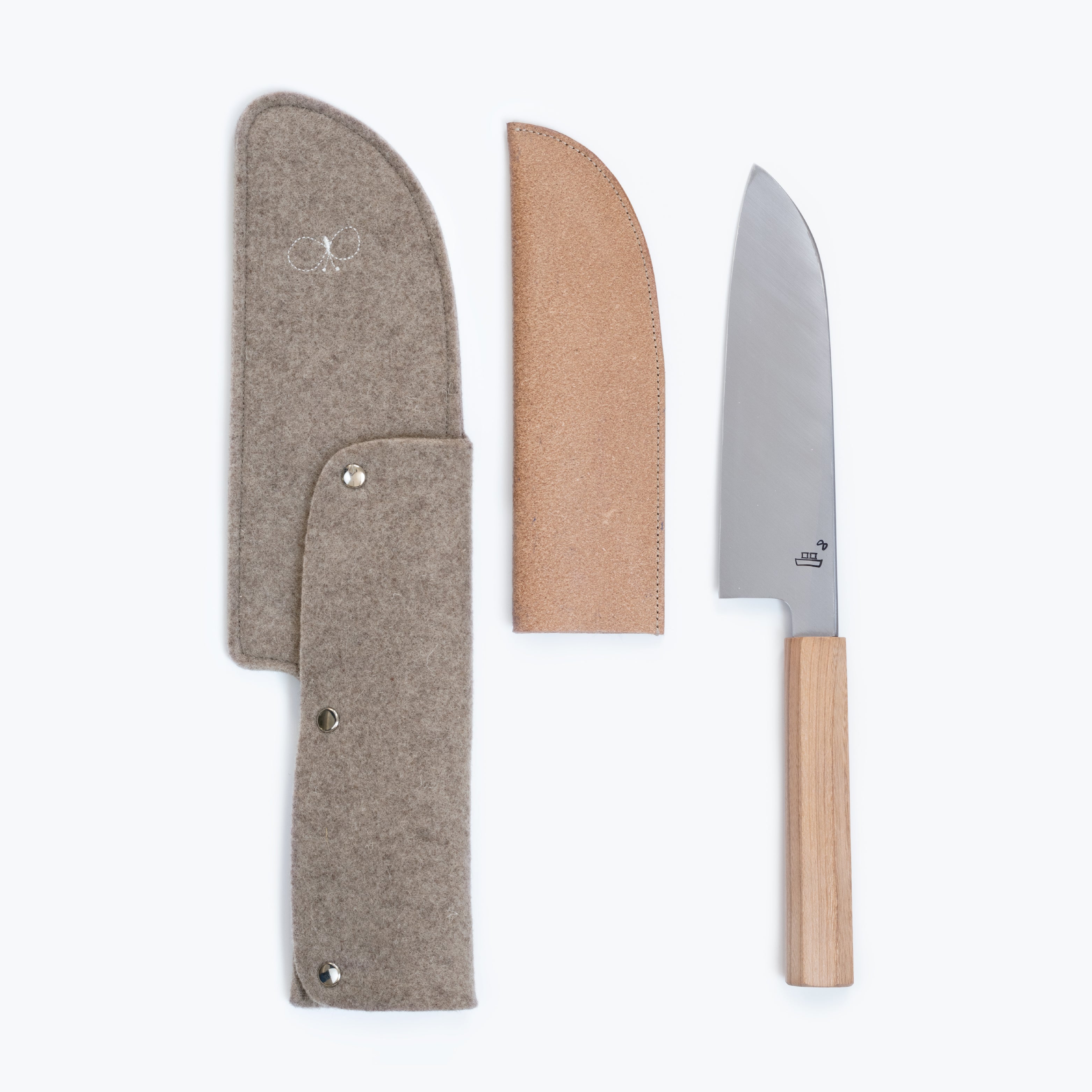
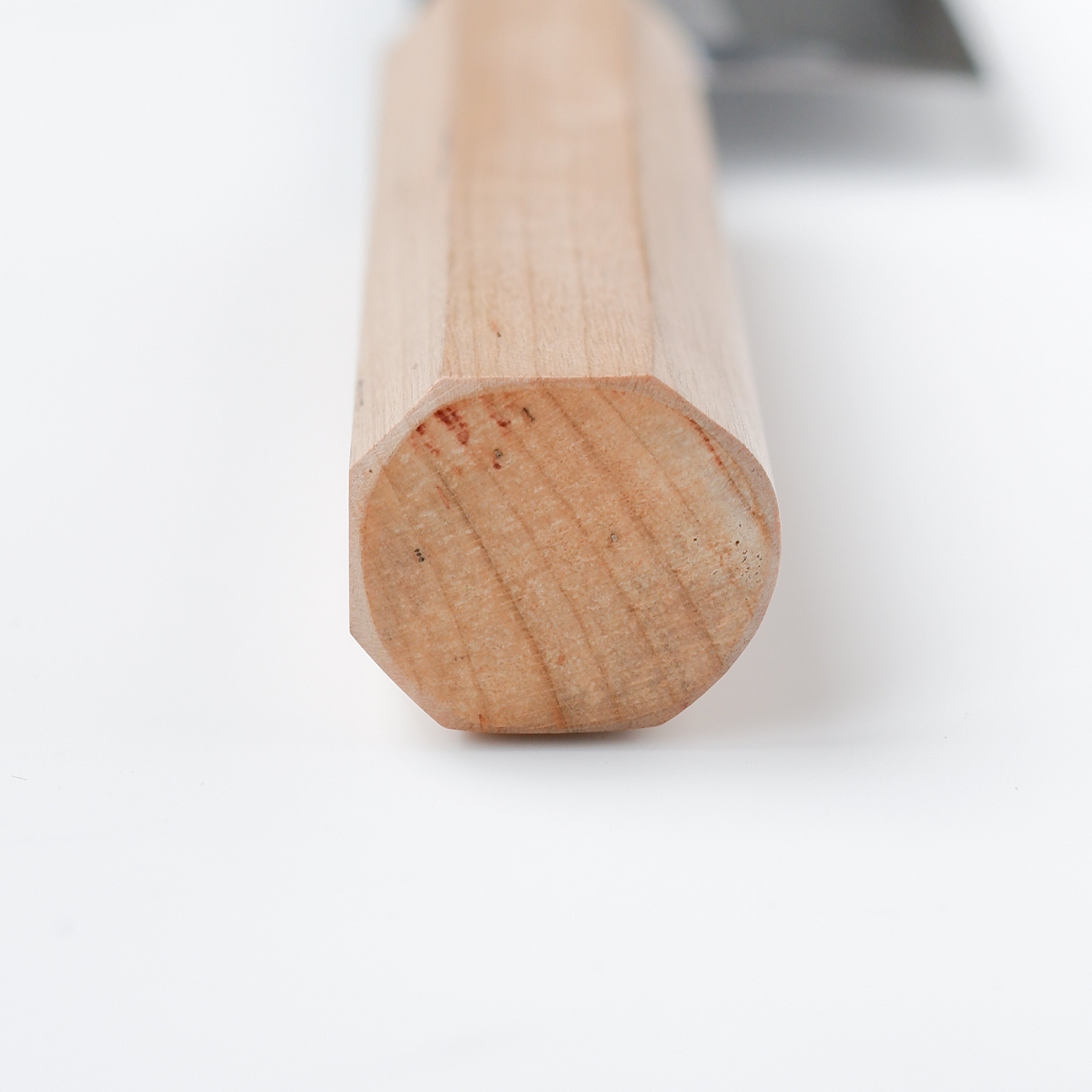
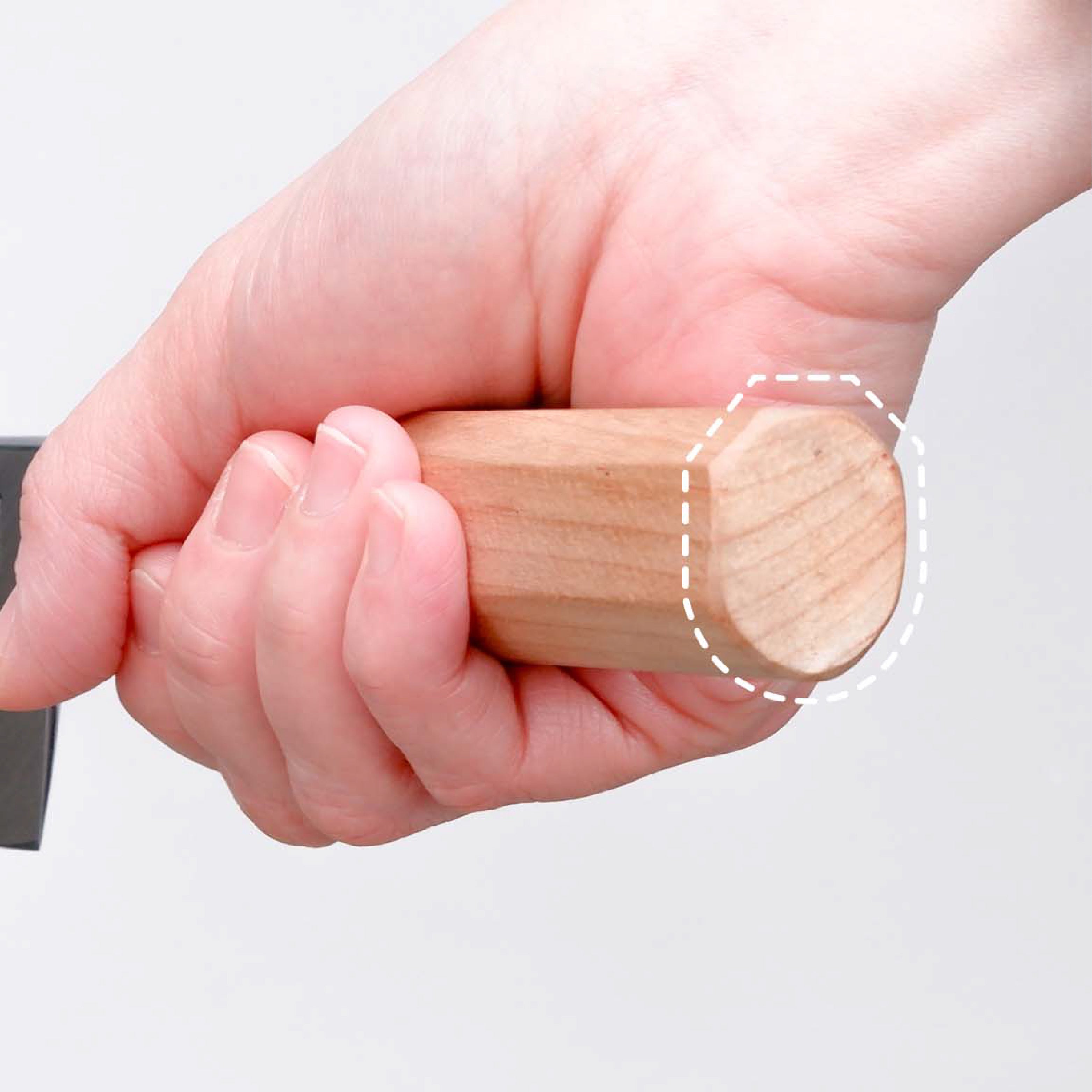
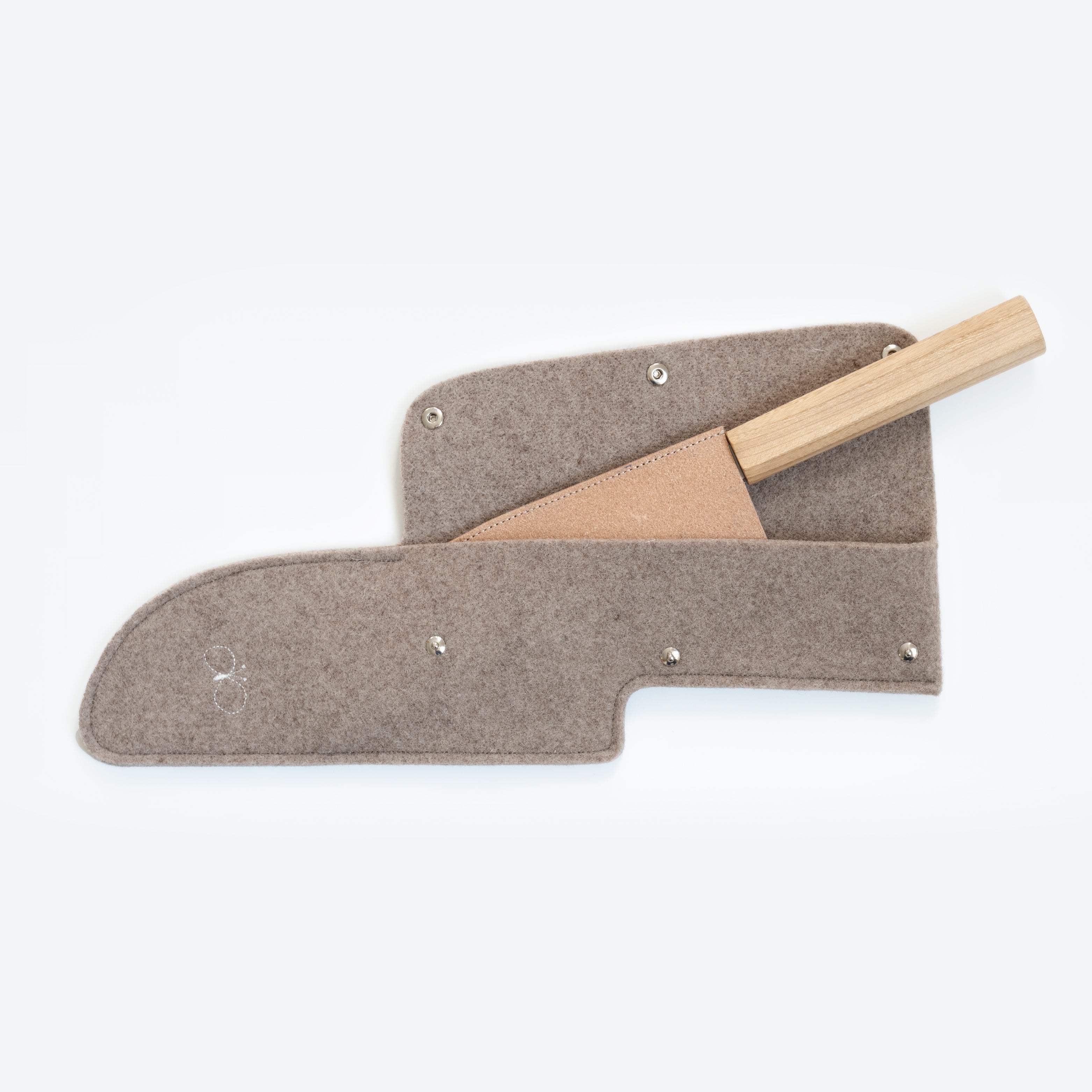
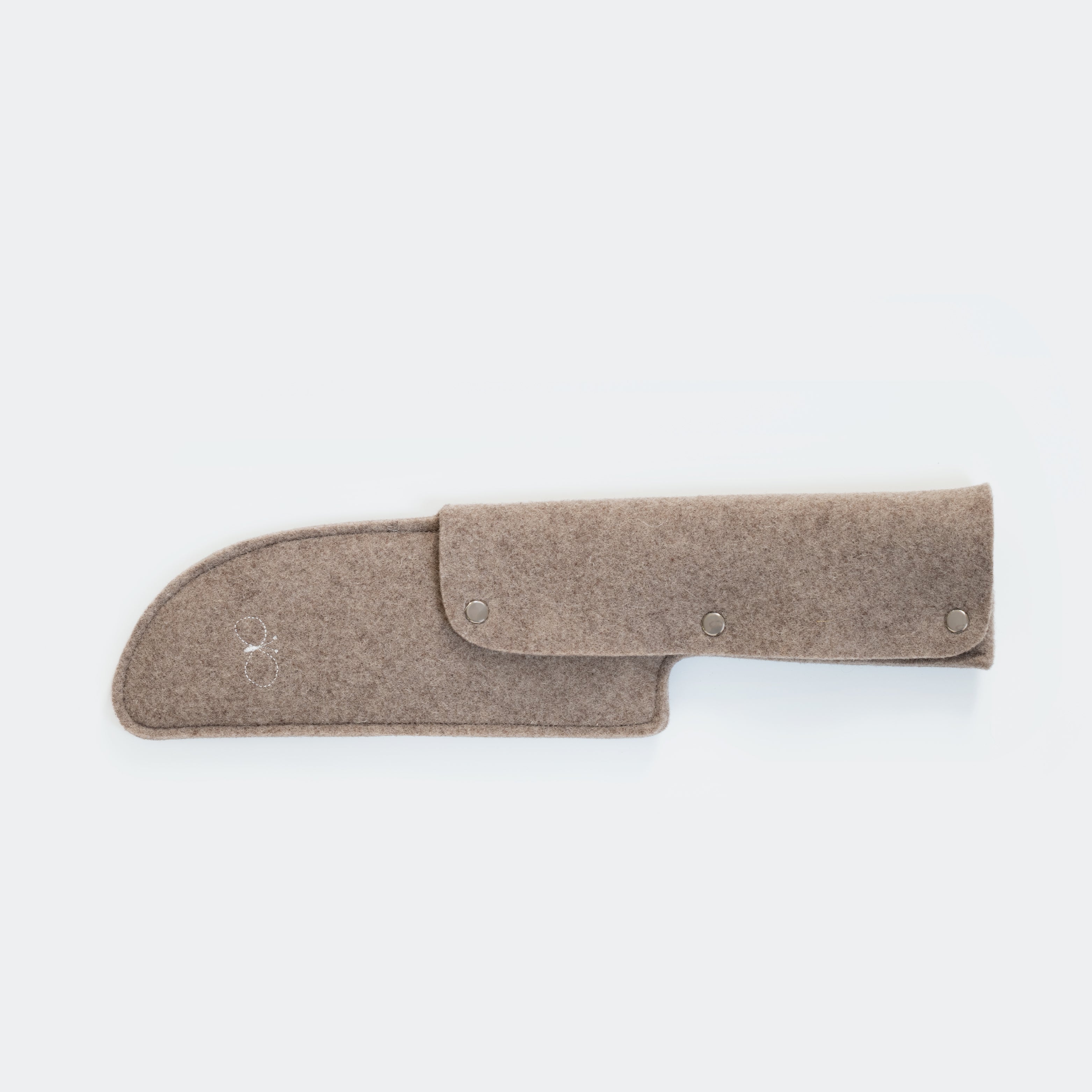
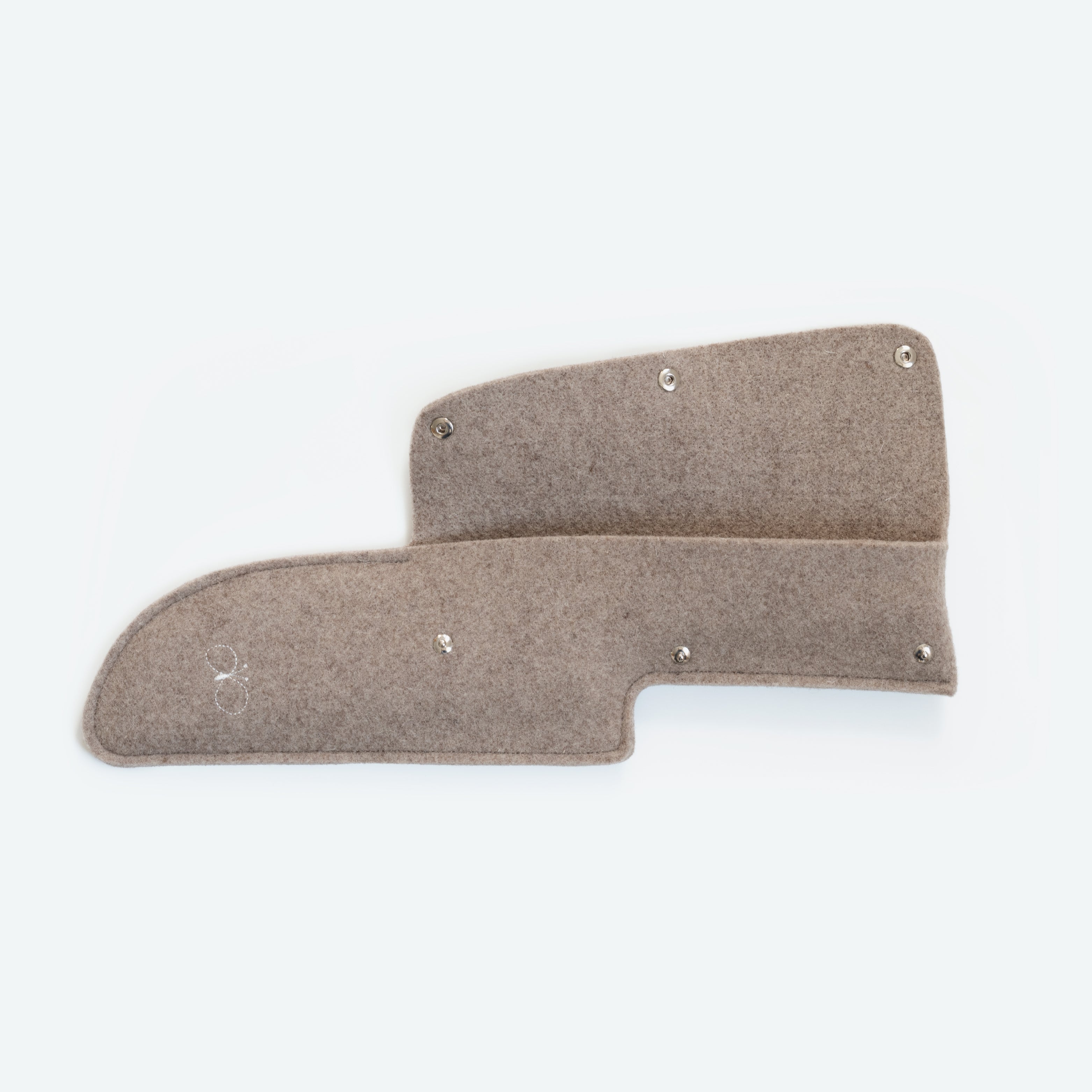
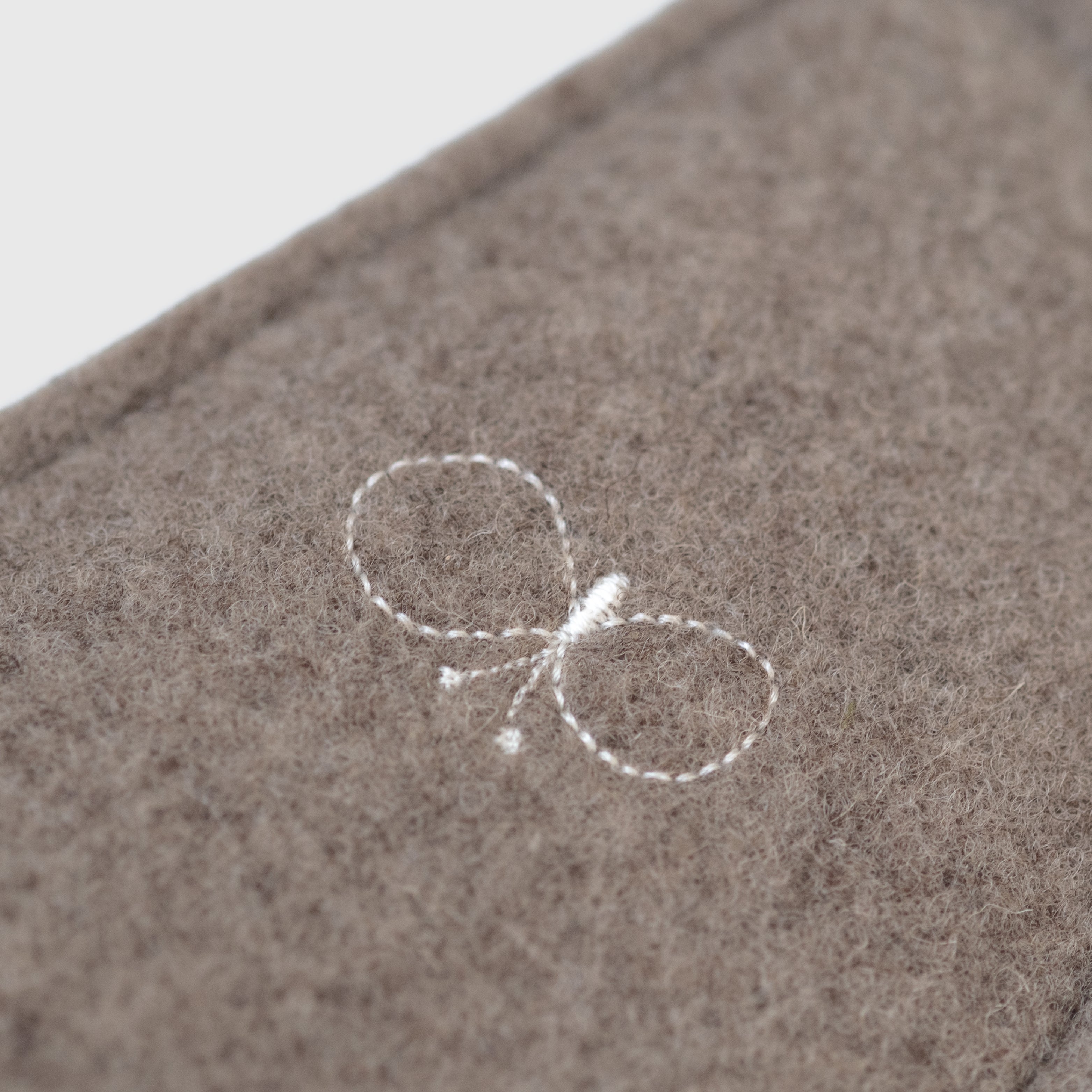
D COUTEAU DE VIE SANTOKU mina perhonen x KAMA-ASA
Overview
All-purpose kitchen knife widely used in Japanese households
Santoku is an all-purpose kitchen knife with a long, straight blade for cutting various foods, including raw meat, fish, and vegetables. The blade shape is a combination of Nakiri, a Japanese traditional kitchen knife exclusively used for cutting vegetables, and Gyuto, an all-purpose kitchen knife widely used overseas.
Made from Shirogami No.2, which maintains sharpness and is easy to sharpen
Shirogami No.2 is a steel material that balances ease of sharpening and edge retention. The blade is thin and finely sharpened by the skilled sharpener, resulting in excellent cutting performance. Although it is prone to rust because it is carbon steel, it surpasses stainless steel in terms of sharpness and ease of sharpening.
Features
Production Area
“knife of life” are manufactured in Sakai, Osaka, a city with a tradition of over 600 years and one of Japan's leading producers of Japanese kitchen knives. Known as “Sakai Uchi Hamono (Sakai Forged Blades)”, the production involves a specialization in “blacksmithing”, “sharpening”, and “handle production.” Even today, it is made one by one by craftsmen, and has earned the utmost trust of chefs. A single knife is the culmination of the skills of the skilled craftsmen.
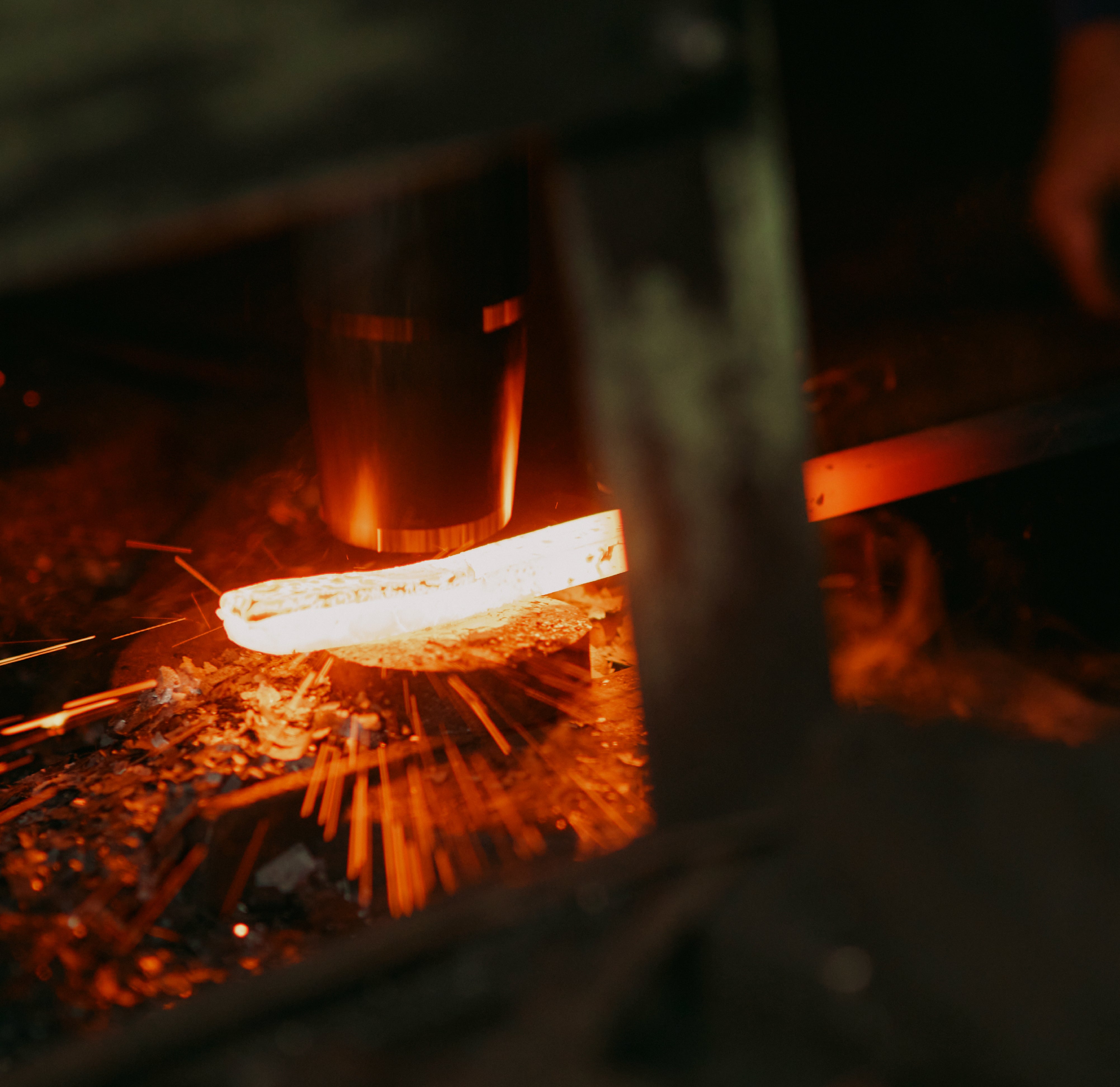
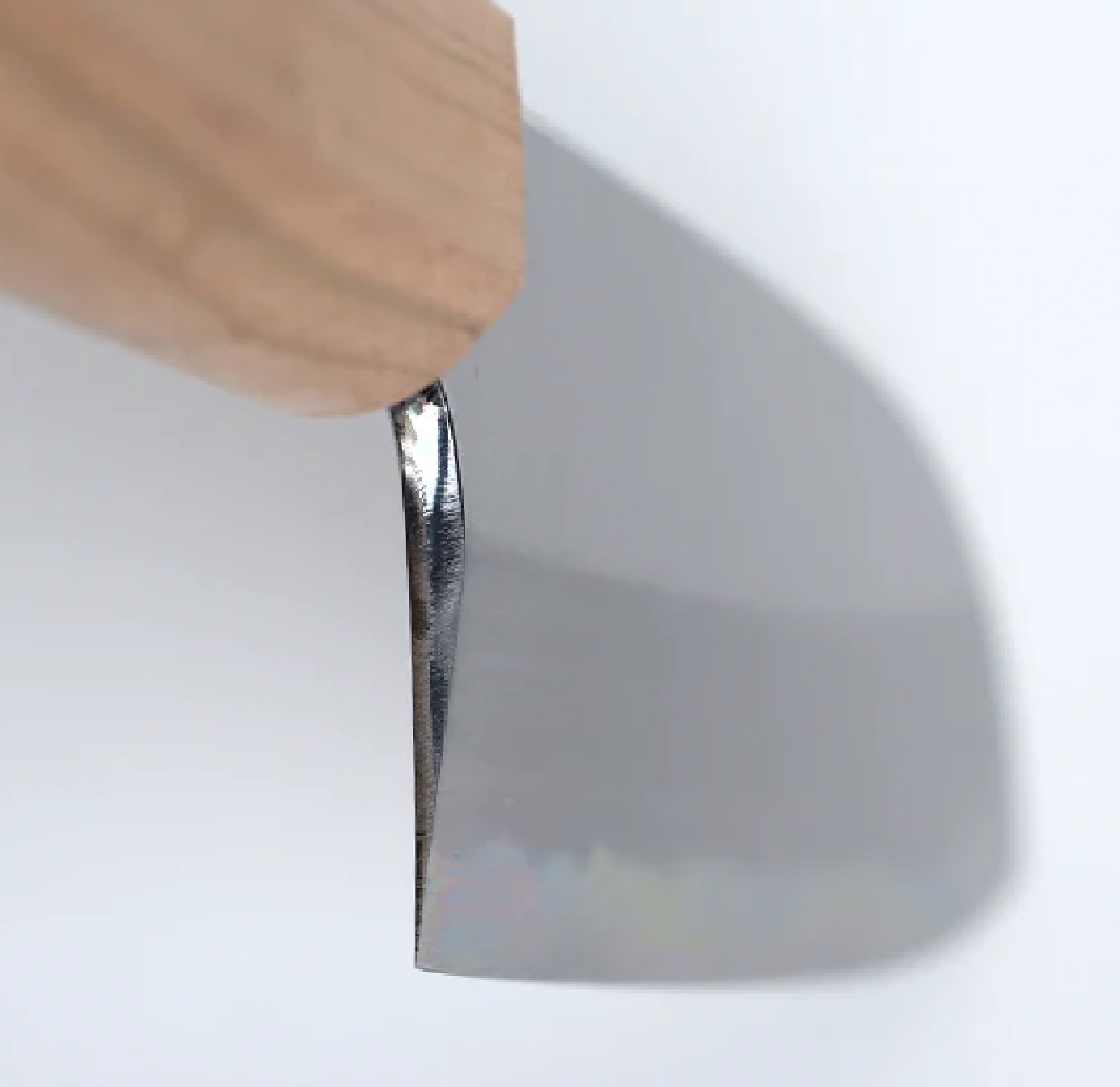
Single-Edged Blade
The blade has a single-edged finish. It is characterized by a hollow called ‘ura-suki’ on the back side and a ‘tapered blade shape’ with varying thickness towards the cutting edge. These two characteristics enable you to cut ingredients without unnecessary scraping, and prevent deterioration. It is only with a single-edged blade that food can be easily detached and cleanly cut.
Materials
The blade is crafted with Shirogami, known for its few impurities compared to other steel materials used for Japanese kitchen knives. ‘Shirogami No.2,’ in particular, is a well-balanced steel with moderate hardness, excellent sharpness and edge retention, and is also easy to sharpen with a whetstone. Cherry wood is chosen for the handle due to its hardness and resistance to corrosion. The grain of the wood is fine and shiny, and it is also highly durable. It has a smooth touch and you can feel the warmth of wood.
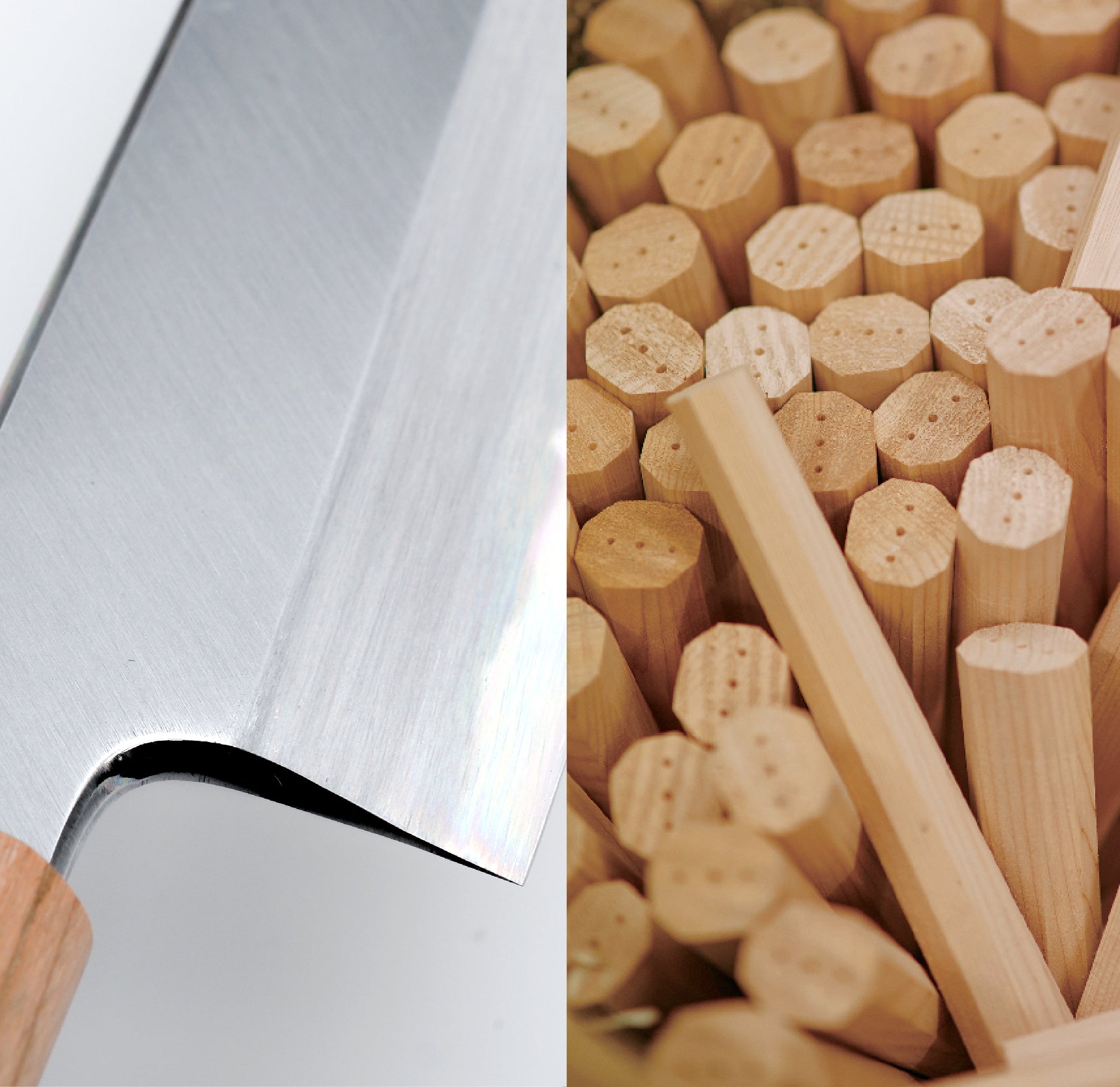
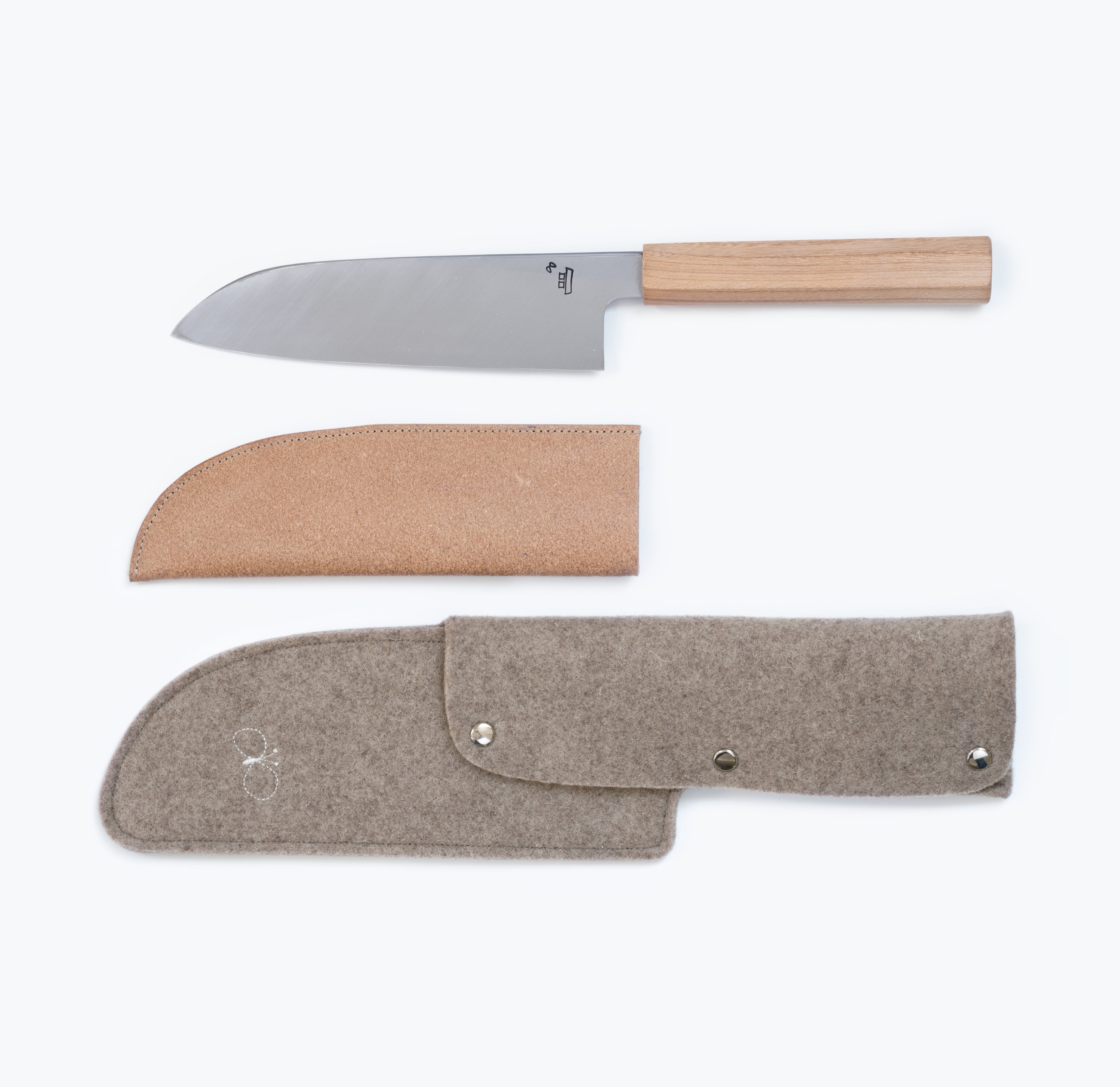
Original engraving and knife case
On the back of the blade is an engraving of an original mark of the “choucho” design of
min? perhonen above the KAMA-ASA logo.
Additionally, the knife comes with an original felt case embroidered with "choucho" and a leather sheath to cover the blade, embodying our passion for "knife of life."
Spec

Details
Specifications
- Dimensions
- Total length 310mm / Blade length 180mm
- Weight
- 150g
NOTE: Sizes and weights may vary due to the handmade nature of the products. - Knife bevel
- Single bevel
- Dominant hand
- For right handed
- Manufacturing process
- Forged
- Blade structure
- Kasumi layer
- Blacksmith
- Yoshikazu Tanaka
- Sharpener
- Ippei Kawakita
- Handle production
- Shuhei Koura
- Material
- Blade = Carbon steel (Shirogami No.2) Handle = Cherry
Precautions
- Wipe frequently during use, as the steel material is prone to rust from exposure to moisture and acidic foods.
- Refrain from cutting hard ingredients such as pumpkins, frozen foods, bones, and shells to prevent from chipping, cracking or breaking.
- Please read the enclosed user's manual before use.
Handling of Knives
- Hand wash with a mild dishwashing detergent and sponge and rinse well.
- Wash immediately after use, and wipe away any moisture before storing.
When rinsing, it is also recommended to pour boiling water to dry and also disinfect.。 - Do not use dishwashers, bleach or dry over an open flame as they may cause damage.
Types of Rust
-
Reddish rust
If left unchecked, it can erode into the inside and cause damage. Upon noticing rust of this color, remove it as soon as possible using rust erasers or cleansers available in markets.
NOTE: To avoid the risk of injuries, use a whetstone to remove rust from the blade edge. -
Blackish rust
Has a coating effect that can prevent the growth of reddish rust, allowing for continued use.
Maintenance
- The knife will gradually lose its sharpness with regular use. If you feel that the sharpness has deteriorated, sharpen it with a whetstone as soon as possible or consult KAMA-ASA.
- Refrain from using a simple knife sharpener as it may cause chipping of the blade.
Storage
- To prevent rust, avoid storing in wet or damp areas and choose a well-ventilated space instead.
- If the knife will not be used for some time, applying oil to the blade can help prevent rust.
Dab 1 to 2 drops of cooking oil or blade oil onto a cloth and lightly rub it on. It is also recommended to wrap the blade in newspaper, which contains oil (please wash the oil applied before use). - Store with caution on magnet racks as it may lead to discoloration or chipping.
User Guide for the Leather Case
- Due to the natural characteristics of leather, there are individual differences in expression. Please enjoy it as the individuality and the expression of the leather.
- Handle with caution when removing the leather case to prevent injuries.
- Wash the knife before every use.
- Always wipe away any moisture before storing in the leather case.
- To prevent mold, make sure to dry the leather case if it gets wet.
Engraving Service
Want a personal touch to your knife?
KAMA-ASA offers a free hand engraving service.
Please choose engraving locations and enter desired characters.
- Please refer to the photo below for the engraving style specifically for this knife.
- Delivery date cannot be specified.
- Will be dispatched within 7 to 10 days.
- We will engrave the text as entered.
- For the cursive alphabet, we highly recommend that the initial letter be capitalized.
- Blade (A)
KANJI or KATAKANA / Cursive alphabet Within 10 letters / Within 20 letters -

FOIRE AUX QUESTIONS
Pour l'instant, nous n'offrons pas ce service en France car nous n'avons personne pour le faire dans la boutique parisienne. Notre collègue de la boutique de Tokyo vient parfois en France et est en mesure de faire des gravures, cependant nous n'avons pas les dates précises de ses venues. Si vous tenez absolument à faire graver votre couteau, nous pouvons vous aider à passer votre commande au Japon. Dans ce cas, veuillez nous donc contacter via le formulaire de contact avant d'acheter votre couteau.
La plupart des éclats de lame de couteau peuvent être réparés par un aiguisage régulier. N'hésitez pas à nous en parler en boutique. Nous pouvons également accepter les réparations à distance, mais dans ce cas, les frais de livraisons sont à votre charge. Les prix varient en fonction du type de couteau, de la longueur de la lame et de l'état. Veuillez donc apporter votre couteau en boutique ou nous contacter à l'aide du formulaire de contact.
Veuillez noter que des éclats peuvent se produire lorsque vous coupez des aliments durs tels que des os, des graines et des aliments congelés, ou si le couteau tombe ou se coince dans une planche à découper dure.
Les couteaux vendus par KAMA-ASA peuvent être réparés, sauf dans certains cas, tels que des dommages irreversibles. La réparation et l'élimination de la rouille redonneront au couteau son tranchant et vous permettront de l'utiliser plus longtemps. Dans le cas de couteaux achetés dans d'autres magasins, il se peut que nous ne soyons pas en mesure d'en réparer dont le matériau de la lame est inconnu. En général, nous acceptons de réparer des couteaux en métal qui peuvent être aiguisés à l'aide d'une pierre à aiguiser, mais nous ne pouvons traiter la reparation de couteaux en céramique.


